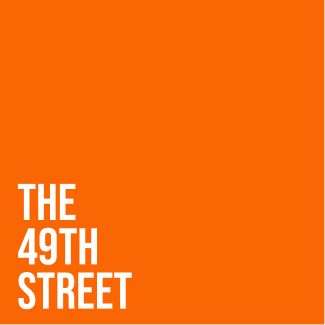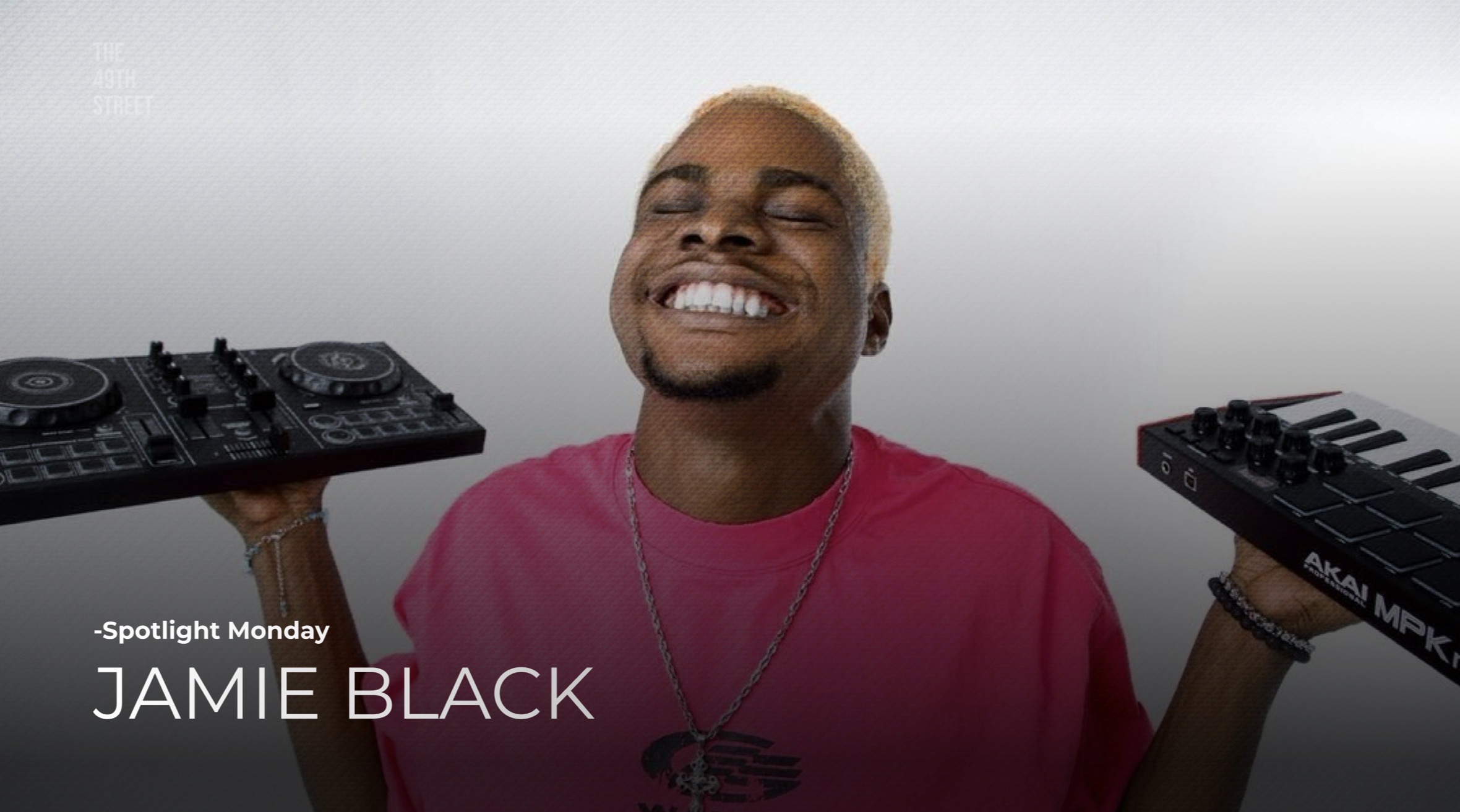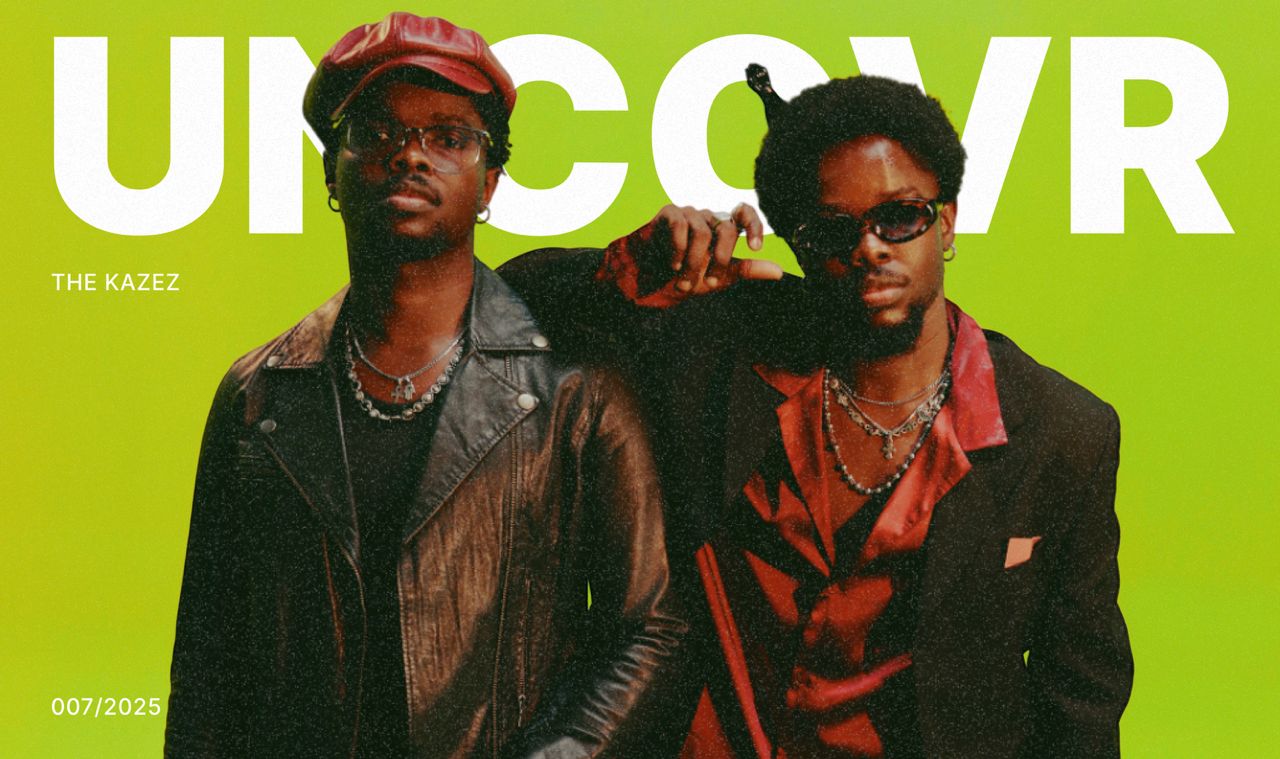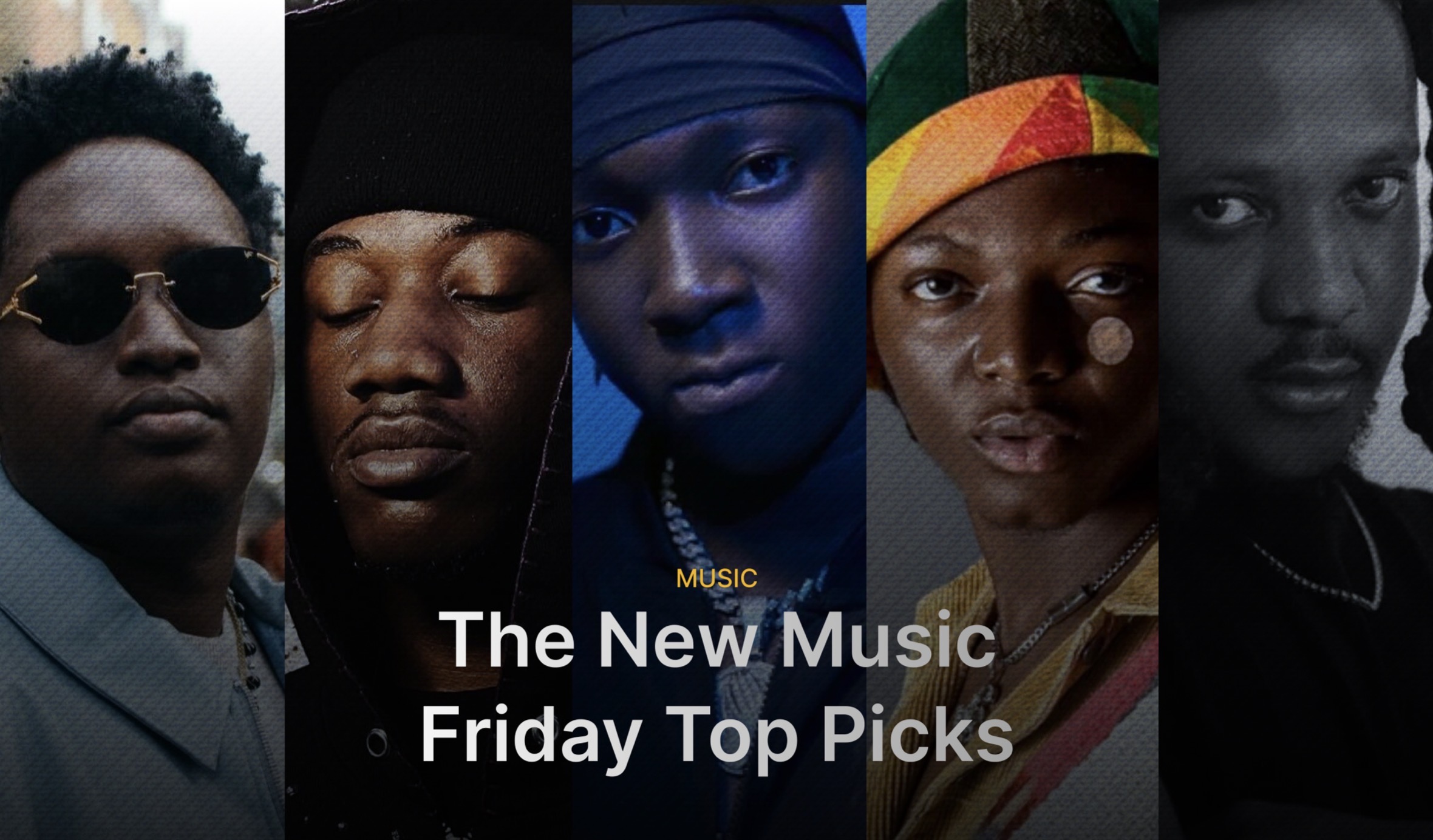by Ifeoluwa Olutayo
“It’s so cool because we never get any cool art shows on the mainland!”
This sentiment and its many variations echoed across Kayode Street in the heart of Ogba, Lagos, just a year ago. The audience was captivated, and the reception was overwhelmingly positive—a moment of pride for Jojolola Dopamu, an art professional, assistant gallery manager, and the manager of VOFO.
Jojolola Dopamu is a multifaceted creative professional, excelling as a curator, journalist, and filmmaker. With a degree in Mass Communication from Babcock University, Jojo has dedicated his career to exploring and documenting cultural narratives, particularly those rooted in African and diasporic experiences. His curatorial work includes participating in the inaugural +234Art Fair in March 2024, where he curated the Digital Art experience, further establishing himself as a promising new voice in Nigeria’s art scene.
At the heart of Jojo’s creative journey is his partnership with VOFO, a dynamic artgod whose eclectic style resonates deeply with Jojo’s curatorial vision. Together, they have formed a creative synergy that has brought ambitious projects like SEE ME DIE to life. Jojo describes himself as a man of many visions and ideas, eager to share them with the world, and VOFO’s artistic contributions have been a key part of realising these visions. Jojo’s journey as a curator is deeply intertwined with the organisation of SEE ME DIE and his ongoing collaboration with VOFO.
SEE ME DIE was a labour of love. With limited resources but boundless ambition, Jojolola (affectionately known as ‘Jojo’, pronounced ‘Juh-Juh’), along with VOFO and Vitalis Nwenyi, brought this art experience to life. Jojo calls it an “Exhibirience”—a deeply profound and thematic event. The provocative title, SEE ME DIE, was meant to carry significant thematic and philosophical weight, reflecting on the activities we engage in throughout life, which, in essence, is just a holding space until we die.
In this interview, I sit in conversation with Jojo, as he reflects on his career in the art world, the journey to creating SEE ME DIE, what it took to bring it to life, and what the future holds.
Q: You wear many hats—curator, journalist, filmmaker. How do these different roles influence each other, and how have they shaped your approach to curating exhibitions like SEE ME DIE?
There’s so much to do, I just do my best to do the ones that come the easiest to me and just hyper-focus on getting better at them and collecting experience from different places like pokémon. I just do the things I gravitate towards naturally. Thankfully, my degree in mass communication comes in handy across the board.
I approach my career as a curator with a sense of resourcefulness. I don’t come from a background of people who exist strictly in the art market, so I had to make do with the little opportunities I could afford myself. On professionally joining the art world, I found a lot of support, but starting out, it was a rather lonesome learning curve.
Then comes VOFO who could relate, and had a similar hunger to create an impact or a shift in the local art scene and beyond and we’re working together to achieve goals. One of these goals was to set up a major event to push VOFOART, make sales, collaborate, and create a signature experience that would be hard to forget.
That’s how we arrived at SEE ME DIE. It took a lot of that same resourcefulness to pull what we did with SEE ME DIE. For VOFO, Vitalis, and I, it wasn’t easy, especially with funding, but with a never-say-die approach, you can execute almost anything, you just learn to finesse as you go on.
Q: Your academic background is in Mass Communication. How has that education informed your work in the arts, particularly in curating cultural narratives?
Mass Communication has been extremely pivotal to my career in curating cultural narratives in many ways. I majored in Broadcasting and Journalism. Journalism is an extremely vast field, and it’s quite great because you kind of get to select the area that appeals to you the most. For me, Arts and Culture were calling out to me. It’s always been such an audible call. I heard it loud and clear, and ever since, I just leaned in and sought more experience in that area, and it’s put me in some very interesting spaces so far.
Also, studying the history of media and communication in Nigeria has this special way of exposing you to your culture, and if you’re looking well enough, you feel a sense of custodianship, from there, it all just plays out naturally.
Q: Participating in the +234Art Fair was a significant milestone for you. What was the experience like, and how did it contribute to your growth as a curator?
It was super significant. My boss at the gallery, Tola Kerele, has so much faith in me and my little ideas. She gave me that role after a discussion in a meeting where I proposed my ideas for the fair, and she listened and gave me major curatorial responsibilities for the digital art section of the fair. She does this constantly, giving me responsibilities I’ve never gotten before to strengthen my hand, showing the kind of trust that motivates you to do more to repay them.
It’s a beautiful thing, to have a boss who is that supportive and trusting. The fair was a great experience for the better part of it, the rest of it that didn’t pan out exactly as we had envisioned served as lessons more than deterrents. I just plan on getting better with the experience, and that’s it, that’s my focus.
Q: You’ve mentioned having many visions and ideas. Can you share more about these creative ambitions and how you plan to bring them to life?
There’s so much I have in mind to do. I feel like there is so much ground to be covered, and I consider myself to be some sort of idea machine. I have way more ideas than achievements, so where I’m at is a place where I’m learning from people who have done it before me, as well as people who are doing it, to transform my ideas into reality in the best ways possible.
Q: SEE ME DIE seems to be a pivotal project in your career. How do you view its role in your overall journey as a curator and a creative professional?
SEE ME DIE showed me it was possible – creating an impact, bringing people along, expressing yourself, and many more things. Moments and periods like the maiden edition of SEE ME DIE where you have to dig in and finesse your way through things teach you a whole lot. It was real hands-on work.

We couldn’t afford a team to clean up, manage, and follow up on certain things so we did everything ourselves. Doing all the dirty work not only builds character, it teaches you a lot and fills you with a certain type of pride, when you know you built something that works brick by brick as the kids these days say it.
Q: Cultural narratives, especially those rooted in African and diasporic experiences, are central to your work. How do you ensure these narratives are authentically represented in your curatorial projects?
I’m quite the pan-African, you know? It’s not even a complicated thing to see. Black Africans share a similar struggle. We’re all plagued by the same things from terrible leaders to corporate racism and more. Luckily for me, I got two years of experience writing under KK Obi’s editorship at BoyBrotherFriend where I got to write on and amplify the stories of black people and other minority groups the world over. This helped me see the different ways possible to do this, and the different levels and forms it can take on.
I grew up on the Lagos mainland, I witness what my people go through in HD, I go through some of it myself, so however I choose to tell these stories, it can’t not be authentic, because every story I tell and every time I lend my voice, I am doing so from a place of personal experience and observation. There is a quote by Amiri Baraka that says “Art must be an integral part of the struggle…”, and that’s a truth that frequently informs my curatorial philosophy.
‘Struggle’ aside, I also believe that my people are a very beautiful people and we have a lot going for ourselves, so I feel a deep need to tell their stories and document these moments and feats that make up our culture. This makes me a custodian of the culture, and I really enjoy that title.
Q: The art scene in Nigeria is rapidly evolving. As a new player, how do you see your role within this landscape, and what do you hope to contribute?
The art scene in Lagos and Nigeria as a whole is undergoing what I have severally described as a ‘Renaissance’. As things get tougher, our stories become more complex, and the need for self-expression is at an all-time high. As a result, more and more people are turning to art as a source of respite from the harsh realities of today’s Nigeria.
Coming onto the local art scene, and watching everything continue to unfold, I plan to combine my training as a mass communicator and an art professional. I had been allowed to do this through my experience working as a correspondent with media brands or outlets like MoreBranches and an international culture and arts publication like BoyBrotherFriend where I got to report on beats about art, fashion, social issues, and more.
These experiences did well to show me that there is more to the scene and that plenty of work still needs to be done to ensure that the local art scene is documented and reported on with the level of commitment it deserves. I feel like this is where I step in.
Now, I won’t say too much, I’ll just ask everyone to watch this space; there’s a very special, groundbreaking thing coming.
Q: Curating the Digital Art experience at the +234Art Fair must have been quite different from organising SEE ME DIE. How did the two experiences compare, and what did you learn from each?
It was different when you look at the scale of both events, but in many ways, SEE ME DIE prepared me for working with the digital side because for SEE ME DIE, we were sure to include the digital artists.
I’ve always been a big fan of digital art, so getting to platform people like Lare Adewale, SDQ ADE, 6wrld, Vitalis, and many other talented digital artists was something. I’d say that the biggest difference between both events was magnitude. Both are pivotal in my learning process and I’m definitely a better curator and art professional thanks to these events.
Q: On the back of this, I also wanted to ask about Digital Art in the Nigerian Art Landscape. What are some of the misconceptions about this amazing form of expression that you find working in the industry as a curator?
Digital Art, in my opinion, is just about as vast as traditional mediums. I love how many dimensions art can take, and the digital artists are so tapped into that. Over here, we have people like Bolu Sowoolu, Yinkore, imit0r, badoats and so many more just literally shifting the paradigm with digital tools. They definitely deserve a lot more recognition, and that’s why I made it my mission to platform these people at every chance that I get. I did this both at SEE ME DIE and +234, and in working so closely with these people, you get a better glimpse of what their worlds are like.
In general, Nigerian artists go through a lot, but digital artists have to battle with constant misconceptions about the amount of work put into their craft. I personally believe that as long as you are translating ideas and concepts from your mind to a physically observable platform, your work is automatically valid. Digital art is definitely the younger form of visual art because paintbrushes existed before computers, so in terms of perception and respect, there is still a long way to go, but I’d say that we should all look at digital art through the lens of an exciting, new frontier with endless possibilities.
These guys are making such an impact, and it’s so surreal to witness and be a part of. I remember taking the kids on a tour of +234Art and when we got to the digital art section, the kids saw the poppy, bright art of Freddie Jacob and they were so amazed by it. Asked them if any one of them was interested in becoming a digital artist like her, and a lot of them screamed a thunderous “Yes!”. It just goes to show you how inspiring their work can be.
Q: With SEE ME DIE, you explored profound themes about life and death. How do you approach such heavy themes while ensuring they resonate with a diverse audience?
Well, ‘Life and Death’ as a concept is such a relatable topic to explore because we have all lived and we will all die. VOFO came up with that title – SEE ME DIE, way before we even started planning for this together. We didn’t have a long discussion about it.
Once we knew we were going to set this up, we knew that that was what we were going to call it, and we knew the ideas we wanted it to explore. From my perspective, the base idea is that death validates our existence. You can’t say you are alive if you’re not going to die.
Where this school of thought gets interesting is that, in life, you’re not really alive if you don’t do your own thing. So all the heaviness around the title kind of sheds off when you realize what we are actually talking about. It’s not particularly grim or bleak, it’s actually quite inspiring really, it’s a reminder to make the end worthwhile by creating and seizing the moment.
Q: VOFO has been a significant collaborator in your journey. Can you tell us more about the creative synergy between you two and how it has influenced the projects you’ve worked on together?
VOFO and I work well together because we’re both crazy, I think. This craziness gives so much freedom for expression, and we both have this unbridled desire to continue doing amazing things on different levels. Sometimes, I tell VOFO to try to lean into a certain emotion or concept to play around with it and see what we get from it, or VOFO brings the finished work and shows me, and I can tell where we are going to showcase it and how.
We have the same goals for the local art scene, we want to make the phenomenon of visual art more accessible to the people. You see, a lot of people view artistic endeavours as stuff for only rich people, we’re working hard to give art back to the people by making people of all stratospheres feel welcome, involved and inspired.
Q: Managing VOFO while curating exhibitions must come with its own set of challenges and rewards. What has the experience been like, and how do you balance these roles?
It’s quite the task these days. I have to juggle so much, but it’s a very interesting balancing act because as I gain more curatorial experience, I have begun to see the things that are possible and gain more connections and inspiration too. All these mean that I get to be a better artnager for VOFO and we’re both pretty sure that it’s going to all pay off in the long run.
Q: VOFO’s eclectic style is a unique asset in your projects. How do you and VOFO collaborate to ensure that this style is effectively integrated into your curatorial vision?
It’s such a huge thing for me, and a lot of other people too. I’d go as far as saying that it’s our selling point. VOFOART is very frequently likened to Jean-Michel Basquiat’s style, and rightfully so, because they both carry this sense of freehandedness with their creativity. Both make works that have deep thematic resonance and the most outlandish colours, shapes, and lines. I was always looking for someone on that frequency, so over time, as we grew closer professionally, and as friends, it was so great for me because that synergy is quite difficult to find and maintain.
Q: Is there going to be a second edition of SEE ME DIE? If there is, what is the “Exhibirience” going to be like this time?
Definitely! SEE ME DIE Part Two is something that has been discussed internally between VOFO, Vitalis, and myself. We have very huge plans and a long list of lessons we learned from the first edition. We plan to expand on the theme and attract more communities, sell more art, create a wider impact, and just generally curate a fun, but thought-provoking ‘Exhibirience’ for everyone who attends. We can’t give a date just yet, but you definitely should watch this space.
Q: Looking ahead, what projects are you most excited about, and how do you plan to continue pushing the boundaries of art and culture in your work?
In the immediate future, there’s the next edition of +234Art, planning is already underway and we plan to create an even bigger art fair than the first edition. On the personal front, I’m preparing to advance a media initiative within the local art scene that I can see going very far and having a lasting impact. I can’t reveal too much right now, but I would advise you to be attentive and excited.




